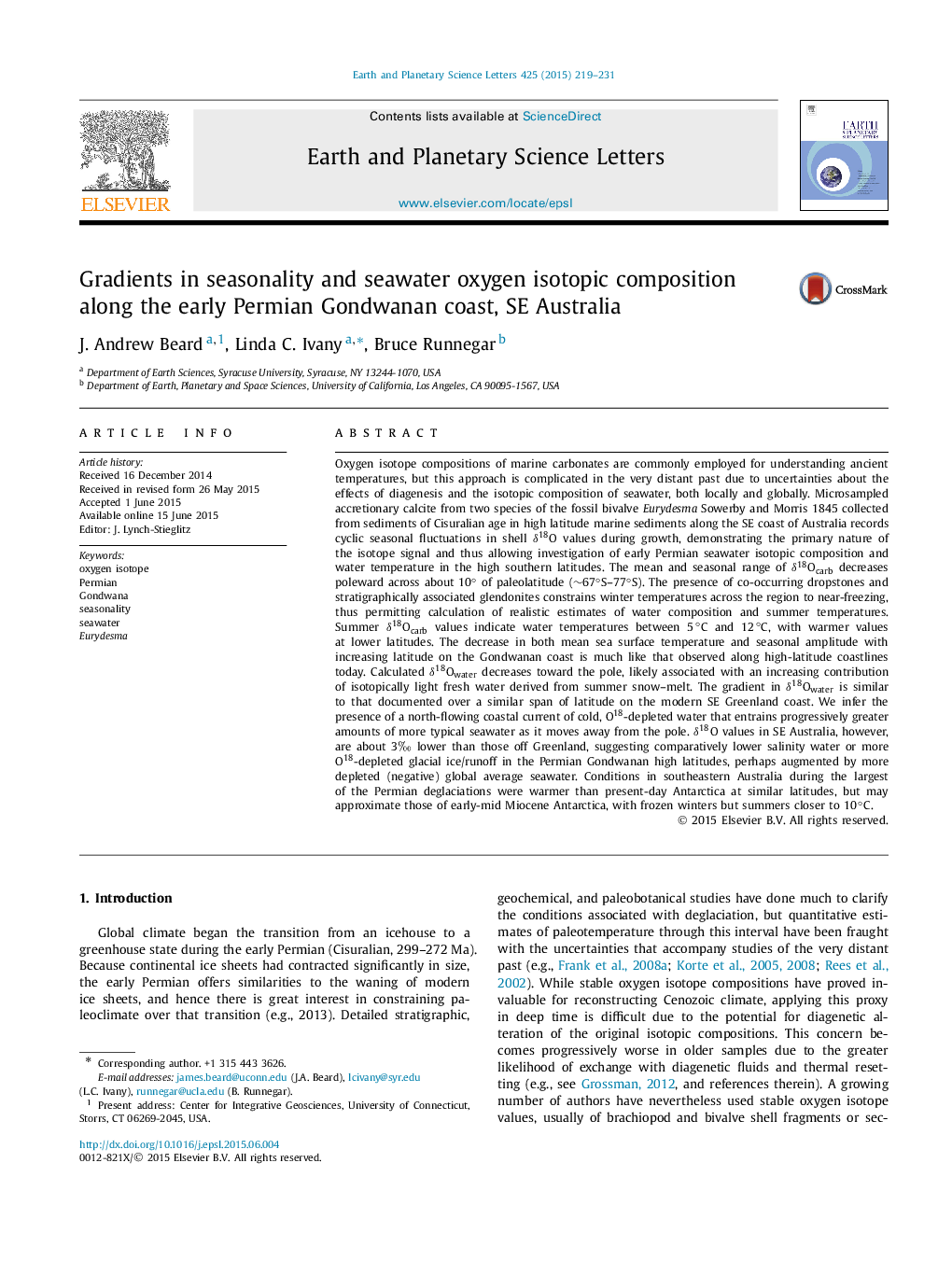| کد مقاله | کد نشریه | سال انتشار | مقاله انگلیسی | نسخه تمام متن |
|---|---|---|---|---|
| 6428289 | 1634731 | 2015 | 13 صفحه PDF | دانلود رایگان |

- Accretionary δ18O data from fossil bivalves reveal early Permian seasonality.
- Glendonites require freezing temperatures and allow calculation of seawater δ18O.
- Seasonal range and seawater δ18O decrease toward the Gondwanan south pole.
- We infer a north-flowing, cold, depleted current along SE Australia in the Permian.
- Summer water temperatures near 10â°C suggest similarity to mid-Miocene Antarctica.
Oxygen isotope compositions of marine carbonates are commonly employed for understanding ancient temperatures, but this approach is complicated in the very distant past due to uncertainties about the effects of diagenesis and the isotopic composition of seawater, both locally and globally. Microsampled accretionary calcite from two species of the fossil bivalve Eurydesma Sowerby and Morris 1845 collected from sediments of Cisuralian age in high latitude marine sediments along the SE coast of Australia records cyclic seasonal fluctuations in shell δ18O values during growth, demonstrating the primary nature of the isotope signal and thus allowing investigation of early Permian seawater isotopic composition and water temperature in the high southern latitudes. The mean and seasonal range of δ18Ocarb decreases poleward across about 10° of paleolatitude (â¼67°S-77°S). The presence of co-occurring dropstones and stratigraphically associated glendonites constrains winter temperatures across the region to near-freezing, thus permitting calculation of realistic estimates of water composition and summer temperatures. Summer δ18Ocarb values indicate water temperatures between 5â°C and 12â°C, with warmer values at lower latitudes. The decrease in both mean sea surface temperature and seasonal amplitude with increasing latitude on the Gondwanan coast is much like that observed along high-latitude coastlines today. Calculated δ18Owater decreases toward the pole, likely associated with an increasing contribution of isotopically light fresh water derived from summer snow-melt. The gradient in δ18Owater is similar to that documented over a similar span of latitude on the modern SE Greenland coast. We infer the presence of a north-flowing coastal current of cold, O18-depleted water that entrains progressively greater amounts of more typical seawater as it moves away from the pole. δ18O values in SE Australia, however, are about 3â° lower than those off Greenland, suggesting comparatively lower salinity water or more O18-depleted glacial ice/runoff in the Permian Gondwanan high latitudes, perhaps augmented by more depleted (negative) global average seawater. Conditions in southeastern Australia during the largest of the Permian deglaciations were warmer than present-day Antarctica at similar latitudes, but may approximate those of early-mid Miocene Antarctica, with frozen winters but summers closer to 10â°C.
Journal: Earth and Planetary Science Letters - Volume 425, 1 September 2015, Pages 219-231